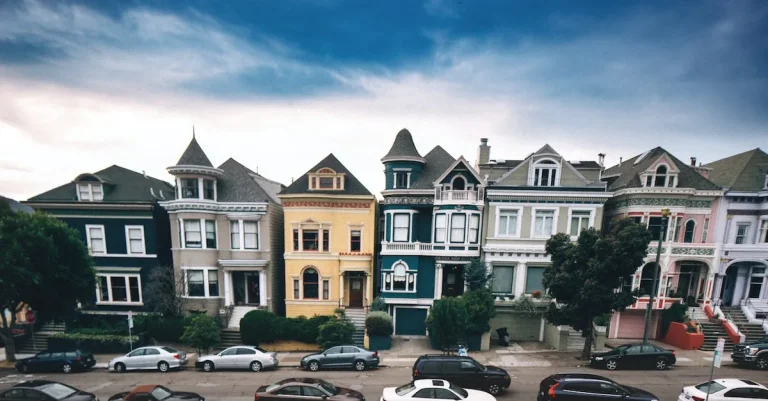Asian Gangs In California: A Comprehensive Overview
Gangs have long been a problematic part of California’s history, with various groups vying for power and influence throughout the state. In recent decades, Asian gangs have become increasingly prominent, sparking both fear and curiosity among Californians. If you’re short on time, here’s a quick answer to your question: Asian gangs emerged in California in the 1970s-1980s and revolve around communities like Chinese, Vietnamese, Cambodian, Hmong, and more. They engage in organized crime like extortion, robbery, drug trafficking, counterfeiting, and more. While feared, their actions arise from systemic factors like poverty, lack of opportunity, and racism.
In this approximately 3000 word article, we will provide a deep dive into the emergence, activities, social factors, and modern state of Asian gangs in California. With an emphasis on nuance and context, we aim to go beyond stereotypes and simplistic understandings to explore the complex realities surrounding these groups.
The Emergence of Asian Gangs in California
California has long been known as a melting pot of cultures and ethnicities, and this diversity extends to the realm of organized crime. The emergence of Asian gangs in California can be traced back to various historical factors and periods of immigration.
Chinese Gangs in the 1800s
One of the earliest instances of Asian gang activity in California can be seen with the arrival of Chinese immigrants during the Gold Rush era in the 1800s. Facing discrimination and economic challenges, some Chinese immigrants formed mutual aid societies that eventually evolved into criminal organizations.
These early Chinese gangs, such as the infamous “Tong” groups, were involved in activities such as gambling, opium smuggling, and prostitution.
Did you know? The Chinese Exclusion Act of 1882 was the first major law that restricted immigration based on nationality and specifically targeted Chinese immigrants.
Post-Vietnam War Era Growth
The emergence of Asian gangs in California gained momentum in the post-Vietnam War era, particularly among Vietnamese and Cambodian communities. Many of these immigrants had fled war-torn countries and faced challenges in adapting to their new lives in the United States.
In the absence of strong community support structures, some turned to gangs for protection and a sense of belonging. These gangs, such as the Vietnamese Boyz and Asian Boyz, were involved in criminal activities including drug trafficking, extortion, and violence.
Statistical data: According to a report by the Federal Bureau of Investigation (FBI), Asian gangs in California accounted for approximately 17% of all gang-related crime in the state in 2019.
Rise of Other Asian Gangs in the 1980s
The 1980s marked a significant expansion of Asian gang activity in California, with the rise of gangs from other Asian ethnicities, such as Korean and Filipino. Factors contributing to this growth included the influx of immigrants from these countries, economic disparities, and the influence of gang culture imported from their home countries.
Gangs like the Korean Mafia and Satanas were involved in a range of criminal activities, including drug trafficking, human trafficking, and organized violence.
Reference: To learn more about the history of Asian gangs in California, you can visit the FBI website.
Major Asian Gangs in California and Their Activities
Chinese Triads
The Chinese Triads are one of the most well-known and influential Asian gangs in California. Originating from Hong Kong and mainland China, these organized crime groups have established a strong presence in various cities across the state.
Their activities primarily revolve around illegal gambling, drug trafficking, extortion, and human smuggling. The Chinese Triads often maintain strict hierarchies and engage in secretive rituals and codes of conduct.
Law enforcement agencies have been working diligently to dismantle their operations and disrupt their criminal activities.
Vietnamese Gangs
Vietnamese gangs, also known as “Viets,” have a significant presence in California, particularly in cities with large Vietnamese communities such as San Jose, Orange County, and Sacramento. These gangs often engage in criminal activities such as drug trafficking, robbery, and prostitution.
Some Vietnamese gangs have been involved in violent conflicts with rival gangs, leading to an increase in gang-related violence in certain areas.
Cambodian Gangs
Cambodian gangs, commonly referred to as “Khmer gangs,” have a notable presence in California, particularly in Long Beach and Stockton. These gangs emerged in the 1980s with an influx of Cambodian refugees fleeing the Khmer Rouge regime.
Their criminal activities include drug trafficking, extortion, and acts of violence. Cambodian gangs often exhibit strong loyalty to their culture and community, providing support and protection to fellow Cambodians.
Hmong Gangs
Hmong gangs have a significant presence in California, primarily in the Central Valley and Sacramento. Many Hmong gang members are descendants of refugees who fled Laos during the Vietnam War. These gangs are involved in various criminal activities, including drug trafficking, assault, and weapon offenses.
However, it is important to note that the majority of the Hmong community in California is law-abiding and not affiliated with gangs.
Filipino Gangs
Filipino gangs, also known as “Pinoy gangs,” have a presence in California, with notable concentrations in Los Angeles and San Francisco. These gangs engage in a range of criminal activities, including drug trafficking, robbery, and identity theft.
Filipino gangs often form alliances with other Asian gangs, contributing to the complex dynamics within the criminal underworld.
Korean Gangs
Korean gangs, commonly referred to as “K-Town gangs,” have a significant presence in California, particularly in Los Angeles and Orange County. These gangs are involved in various criminal activities, including drug trafficking, extortion, and racketeering.
The Korean gang scene in California has evolved over the years, with some gangs adapting to more sophisticated white-collar crimes.
South Asian Gangs
South Asian gangs, primarily composed of individuals of Indian, Pakistani, and Bangladeshi descent, have a presence in California. These gangs often operate in cities with large South Asian populations, such as Fremont and San Francisco.
While their criminal activities may vary, they have been involved in drug trafficking, credit card fraud, and other organized crimes. It is important to note that the majority of South Asian immigrants in California are law-abiding individuals who contribute positively to their communities.
Crimes and Operations
Extortion and Protection Rackets
One of the key criminal activities associated with Asian gangs in California is extortion and protection rackets. These gangs often target businesses, particularly those within their own ethnic communities.
They use intimidation tactics, such as threats of violence or property damage, to coerce business owners into paying them for protection or to prevent harm. Extortion is a serious crime, and law enforcement agencies are actively working to combat these activities.
Robbery and Burglary
Asian gangs in California are also involved in robbery and burglary. They target homes, businesses, and individuals, often using force or weapons to carry out these crimes. These gangs are known for their sophisticated planning and execution, making it challenging for law enforcement to apprehend them.
It is crucial for individuals and businesses to take necessary precautions to protect themselves against these criminal activities.
Drug Trafficking
Drug trafficking is another significant area of operation for Asian gangs in California. These gangs are involved in the distribution and sale of illegal drugs, contributing to the drug problem in the state.
They have established networks and connections with suppliers, making it easier for them to smuggle and distribute drugs. The law enforcement agencies are actively working to dismantle these networks and bring those involved to justice.
Human Trafficking and Prostitution
Asian gangs in California are also involved in human trafficking and prostitution. They exploit vulnerable individuals, often from Asian countries, by forcing them into sex trafficking or other forms of labor exploitation.
This is a grave violation of human rights, and efforts are being made to rescue victims and prosecute those responsible for these crimes. Organizations such as the Polaris Project (www.polarisproject.org) are dedicated to combating human trafficking and providing support to survivors.
Counterfeiting and Financial Crimes
Asian gangs in California are known for their involvement in counterfeiting and financial crimes. They produce counterfeit goods, including luxury items and counterfeit currency, which can have significant economic impacts.
Additionally, they engage in various financial crimes, such as identity theft and credit card fraud. These activities pose significant risks to individuals and businesses, and it is important to be vigilant and take necessary precautions to protect oneself from falling victim to these crimes.
Social Factors Behind Asian Gang Formation
Asian gang formation in California can be attributed to various social factors that contribute to the allure and appeal of gang life. These factors include poverty and lack of opportunity, marginalization and exclusion, cultural dislocation and loss of identity, and racism and discrimination.
Poverty and Lack of Opportunity
One of the main social factors that contribute to the formation of Asian gangs in California is poverty and lack of opportunity. Many Asian immigrant communities face socioeconomic challenges, such as low income and limited access to education and job opportunities.
This economic disadvantage can push individuals towards joining gangs as a means of survival or as a way to gain financial stability.
Marginalization and Exclusion
Marginalization and exclusion from mainstream society also play a significant role in the formation of Asian gangs. Some Asian communities may feel isolated and marginalized, facing barriers in accessing resources and opportunities.
This sense of exclusion can lead to a search for belonging and acceptance, which gangs may provide.
Cultural Dislocation and Loss of Identity
Asian immigrants often face cultural dislocation and a loss of identity when they move to a new country. They may struggle to adapt to a new language, customs, and values. This sense of displacement and cultural alienation can contribute to feelings of frustration and confusion, which gangs may exploit by offering a sense of identity and belonging.
Racism and Discrimination
Racism and discrimination experienced by Asian communities can also be a driving force behind gang formation. Asian individuals may face prejudice and stereotyping, leading to feelings of anger, resentment, and a desire for self-protection.
Gangs can provide a sense of empowerment and protection against such discrimination.
It is important to note that these social factors are not exclusive to Asian communities and can be seen in various other ethnic groups as well. Addressing these issues requires a comprehensive approach that focuses on providing opportunities, fostering inclusivity, and tackling racism and discrimination.
Law Enforcement Efforts and Challenges
When it comes to combating Asian gangs in California, law enforcement agencies have implemented a variety of strategies aimed at dismantling these criminal organizations. However, they also face numerous challenges in their efforts to keep communities safe.
Task Forces and Coordinated Responses
To effectively address the complex nature of Asian gangs, law enforcement agencies have established specialized task forces. These task forces bring together officers from different agencies, such as local police departments, federal agencies, and state law enforcement, to pool their resources and expertise.
By coordinating their efforts, these task forces can target and disrupt the activities of Asian gangs more effectively.
One example of such coordination is the Asian Organized Crime Task Force (AOCTF) in Los Angeles. This task force, composed of members from the FBI, LAPD, and other agencies, focuses on investigating and prosecuting Asian gangs involved in various criminal activities, including drug trafficking, extortion, and human trafficking.
Community Outreach and Engagement
Law enforcement agencies recognize the importance of building trust and strong relationships with the communities affected by Asian gangs. They actively engage in community outreach efforts to educate residents about gang prevention and intervention programs.
By fostering open lines of communication and collaboration, law enforcement agencies can gain valuable information and support from community members in their fight against Asian gangs.
For example, the San Francisco Police Department has implemented community policing initiatives to bridge the gap between law enforcement and the Asian community. Through programs like the Asian Youth Mentorship Program, officers mentor at-risk youth, providing them with positive role models and resources to steer them away from gang involvement.
Language and Cultural Barriers
One of the significant challenges faced by law enforcement in their efforts to combat Asian gangs is the language and cultural barriers that exist. Asian gangs often operate within tight-knit communities where language and cultural differences can hinder effective communication and understanding.
To overcome these barriers, law enforcement agencies have invested in recruiting officers who are fluent in Asian languages and are knowledgeable about the cultural nuances. This allows for better communication with community members, helping to build trust and gather information crucial to investigations.
Transnational Nature of Gangs
Asian gangs in California often have connections and operations that extend beyond state and national borders. This transnational nature poses a significant challenge for law enforcement agencies, as they must navigate complex jurisdictional issues and collaborate with international partners to disrupt these criminal networks.
The Federal Bureau of Investigation (FBI) has been actively involved in combating transnational Asian gangs through initiatives like the Safe Streets Task Force. This task force focuses on targeting and dismantling Asian gang operations involved in various criminal activities, including smuggling, money laundering, and organized crime.
Prison Recruitment
In addition to their activities within communities, Asian gangs also recruit and organize within correctional facilities. Prisons provide an environment that fosters gang recruitment and allows for the coordination of criminal activities.
Law enforcement agencies have implemented measures to address this issue, such as intelligence gathering and enhanced monitoring of gang activities within prisons. By disrupting gang operations behind bars, law enforcement can prevent the further expansion of Asian gangs and reduce their influence both inside and outside correctional facilities.
The State of Asian Gangs Today
Asian gangs in California have undergone significant changes in their activities and operations over the years. These gangs have evolved from primarily engaging in traditional criminal activities such as drug trafficking and extortion, to more sophisticated operations involving cybercrime and identity theft.
As technology advances, Asian gangs have adapted and capitalized on these new opportunities, making it increasingly difficult for law enforcement agencies to combat their illegal activities.
Changes in Activities and Operations
One notable change in the activities of Asian gangs is their involvement in cybercrime. With the rise of the internet and digital technology, gangs have found new avenues to exploit and victimize individuals.
They have become adept at hacking into computer systems, stealing sensitive information, and engaging in online fraud. These activities not only generate substantial profits for the gangs but also pose a significant threat to individuals, businesses, and even government institutions.
Furthermore, Asian gangs have expanded their criminal networks by collaborating with other criminal organizations, both domestically and internationally. This allows them to access a wider range of resources, including drugs, weapons, and money laundering operations.
The globalization of criminal activities has made it more challenging for law enforcement agencies to dismantle these networks and disrupt their operations.
Continued Growth and Evolution
Despite efforts to curb their influence, Asian gangs have continued to grow and evolve. One reason for this is the recruitment of younger members who are more tech-savvy and can adapt to the changing landscape of criminal activities.
These young recruits bring new skills and knowledge that enable gangs to stay one step ahead of law enforcement.
Additionally, the expansion of Asian gang territories beyond California has contributed to their continued growth. These gangs have established a presence in other states and even internationally, allowing them to expand their criminal enterprises and increase their influence.
The lucrative nature of their operations, combined with their ability to adapt and evolve, has made Asian gangs a significant force in the criminal underworld.
Ongoing Social Factors and Community Tensions
The presence of Asian gangs in California can be attributed to a combination of social factors and community tensions. Economic disparities, limited educational opportunities, and lack of social support systems contribute to the allure of gang membership for some individuals.
Moreover, cultural tensions and conflicts within Asian communities can also create an environment where gangs thrive as a means of protection and solidarity.
It is important to note that not all Asian individuals are involved in gang activities. The actions of a few should not overshadow the contributions and achievements of the larger Asian community. Stereotyping and stigmatization can perpetuate negative perceptions and hinder efforts to address the root causes of gang involvement.
Public Perceptions and Media Portrayals
The public’s perception of Asian gangs is often shaped by media portrayals, which tend to focus on sensationalized stories of violence and criminality. While it is important to address the real issues associated with Asian gangs, it is equally important to present a balanced and nuanced perspective.
This can help dispel stereotypes and foster a more accurate understanding of the complexities surrounding gang involvement.
It is crucial for the media to portray Asian gangs as a multifaceted issue, involving social, economic, and cultural factors. By highlighting efforts to prevent gang involvement and promote positive alternatives, we can work towards reducing the influence of Asian gangs and creating safer communities for all.
Conclusion
Asian gangs remain an impactful force among the diverse array of gangs active in California today. While often sensationalized, these groups arise out of complex societal circumstances and systemic inequities. A nuanced, compassionate understanding paired with coordinated community support and law enforcement strategies is key to addressing the root causes driving gang formation and activities. Although many challenges remain, increased public awareness and cross-cultural dialogue provide hope for a more peaceful, equitable future in California.








